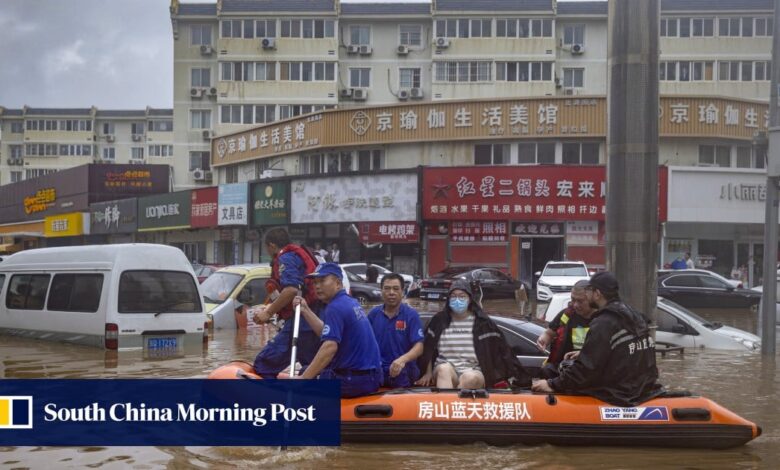Climate change: scientists say strong typhoons are arriving earlier, overlapping with extreme summer rain

[ad_1]
The team from Tsinghua University in Beijing, Southern University of Science and Technology in Shenzhen, Ocean University of China in Qingdao and the University of Hawaii at Manoa published their findings in the peer-reviewed journal Nature last week.
Their analysis of satellite data from 1981 to 2017 showed that intense tropical cyclones, with a maximum wind speed greater than 203.7km/h (126.6mph), have been happening earlier in both the northern and southern hemispheres. For each decade since the 1980s, these storms have shifted 3.7 days earlier on average in the northern hemisphere and 3.2 days earlier in the southern hemisphere.
The shift is only notable for strong typhoons, not less severe ones, according to the study.
Typhoon Doksuri hammers China, bringing floods and landslides
Typhoon Doksuri hammers China, bringing floods and landslides
They noted that the trend towards earlier intense tropical cyclones was most evident in the western North Pacific Ocean – the area of the world with the most tropical cyclone activity.
The researchers looked at southern China, where extreme rainfall events typically first peak in June because of the summer monsoon system and peak again in October because of typhoons making landfall.
However, there was an obvious increase over time in extreme rainfall between the two peaks from July to September, which they attributed to rainfall from intense typhoons arriving earlier.
They observed a similar trend in the Gulf of Mexico, another region heavily affected by tropical cyclones.
Song Fengfei, a corresponding author of the paper and professor at the Ocean University of China and Laoshan Laboratory, said climate change meant the ocean becomes warmer in summer, providing favourable conditions for typhoons to form earlier than their typical peak in autumn.
He said the team would continue to work on analysing the relationship between global warming and typhoons, including investigating how climate change could affect the seasonality of future typhoons and evaluating the impact of overlapping extreme weather events.
[ad_2]
Source link






